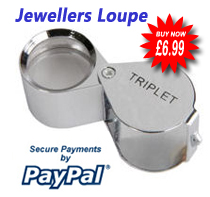We have just heard the sad news of the death of David Barby.
Familiar to a legion of TV antiques fans, David Barby has
been a long running presenter and expert on many antiques TV programmes
including Bargain Hunt, Flog It, Antiques Road Trip and more.
It seemed appropriate to write a small obituary - so with
information gleaned online and with sincere condolences to his many friends and
family, please accept our best wishes and sympathy.
David Barby was one of the highlights of the daytime TV
antiques programmes.
His flamboyant manner, a sense of fun, his famous stare
accompanying the question
"Is that your best price?" Followed by his dead pan silence to some unfortunate antique dealer,.
Adding this to his wealth of knowledge and wit, made
him one of the Bargain Hunt stars. It will not be the same without him.
David John Barby was born on 23rd April 1949 in Rugby
Warwickshire.
Becoming interested in antiques at around 12 years old, he
went into this profession on leaving school and qualified at the age of 21 as a
member of the Incorporated Society of Valuers and Auctioneers.
Originally, he was an auctioneer and worked for a local
company in Rugby before leaving to work for a London firm in 1974.
He returned to the Midlands in 1978 when he was head hunted
by Leamington Spa based auction house Locke and England and became a manager
and valuer and later a partner of the firm.
He established his own valuation business in the 1990s. Called
David J Barby and Associates, the company was based in Hilmorton - a small
village just outside Rugby.
He was actively employed in this business at the
time of his death.
David Barby was a patron of the arts, raising money for Leamington
Art gallery as well as undertaking charity work and fund raising for the Royal
Leamington Spa rehabilitation hospital.
His TV career began in 2002 when he featured on the first
ever episode of Flog In this show he appeared as the auctioneer but later his
skills were deployed as a valuation expert, later appearing in the same role on
Bargain Hunt.
A canny valuer and hard bargainer - delivering outrageously
low offers in such a charming way it must have been difficult to resist, he
soon became known as The Master on Antiques Road Trip.
Earlier in the year he
appeared on this show up against fellow antiques expert Charles Hanson.
No doubt his fellow experts and people he worked with on
these TV shows will miss him and we will look forward to seeing a tribute to
his life and career later in the year.
However, he will also be sadly missed by the millions of
people who tune into Bargain Hunt each day - a show beloved by pensioners,
students and people who work from home.
To many people, David Barby felt like a friend rather than
remote celebrity and we shall miss his company.
David Barby suffered a stroke on the 13th July
and died a week later in Coventry
hospital. He was 63 years old.




















